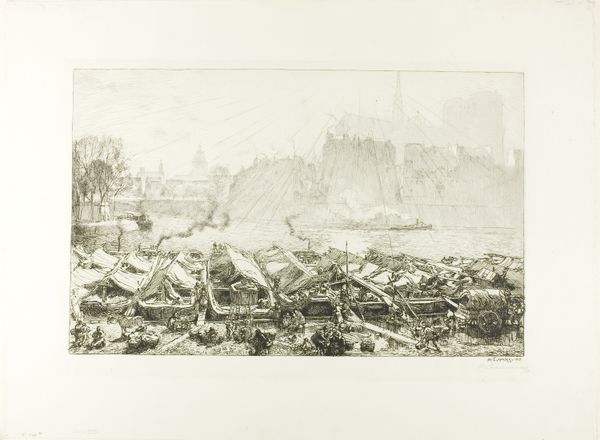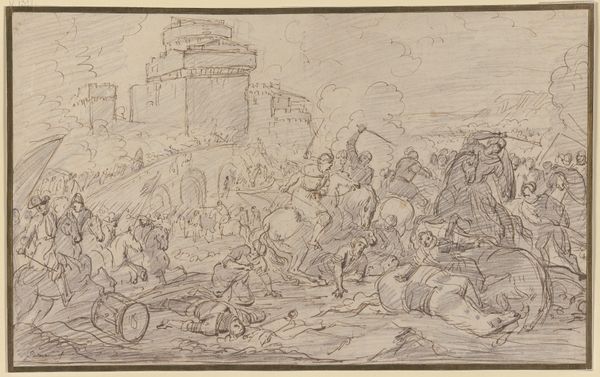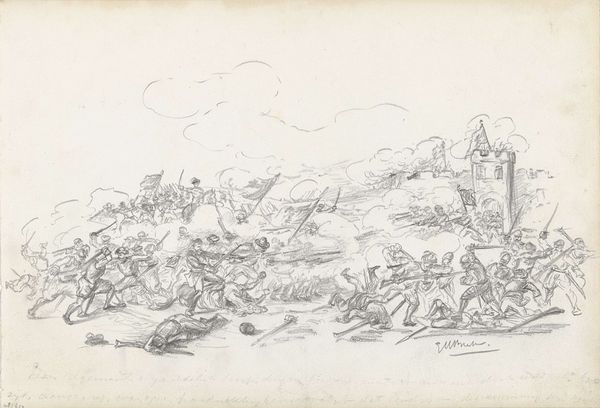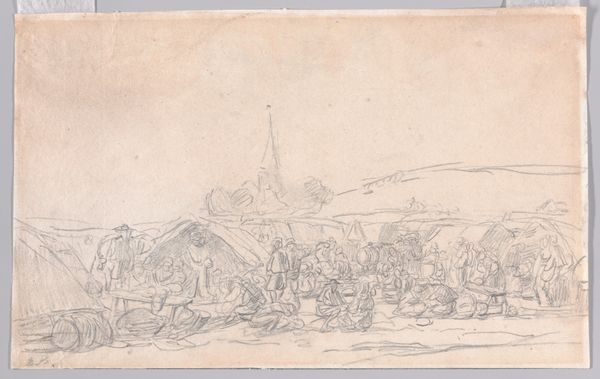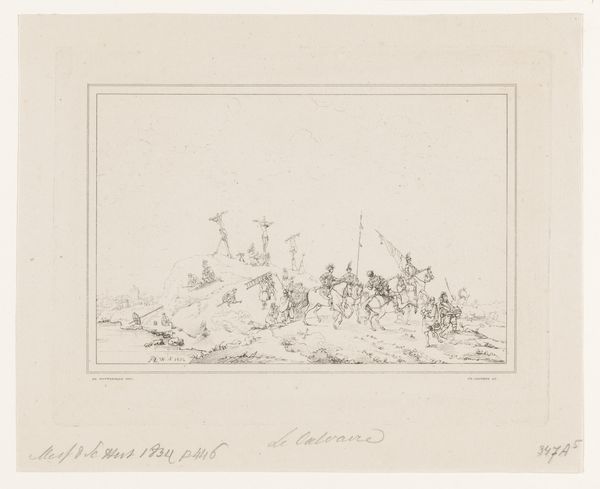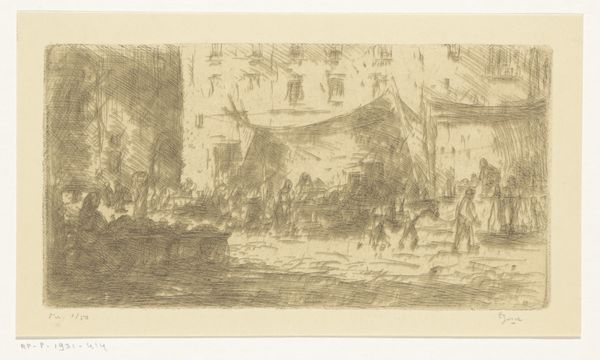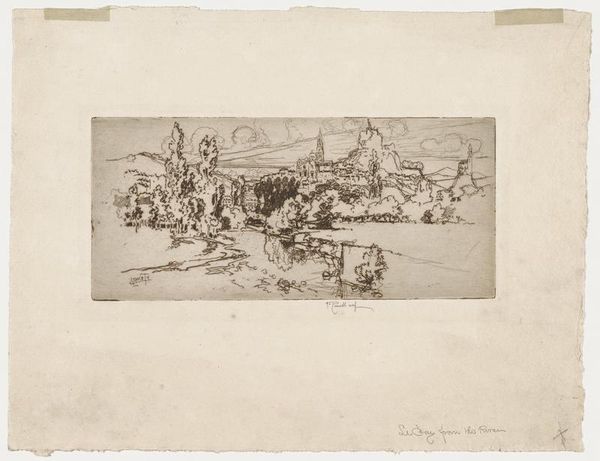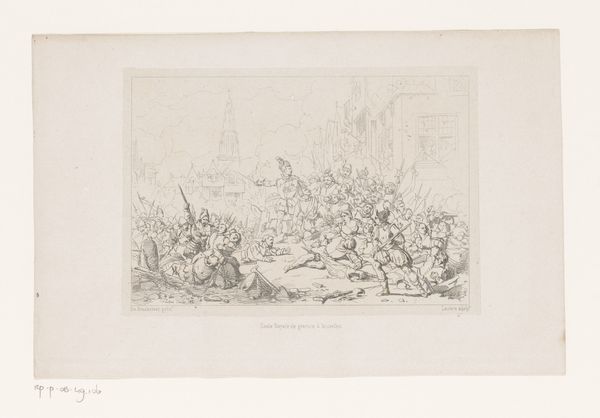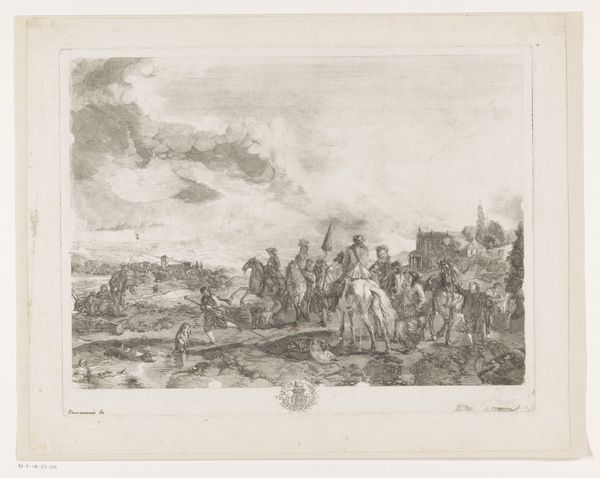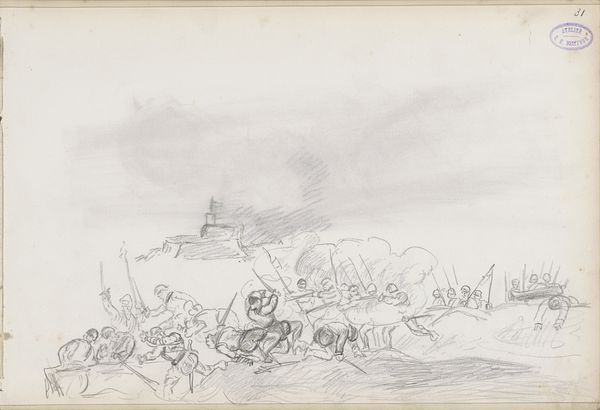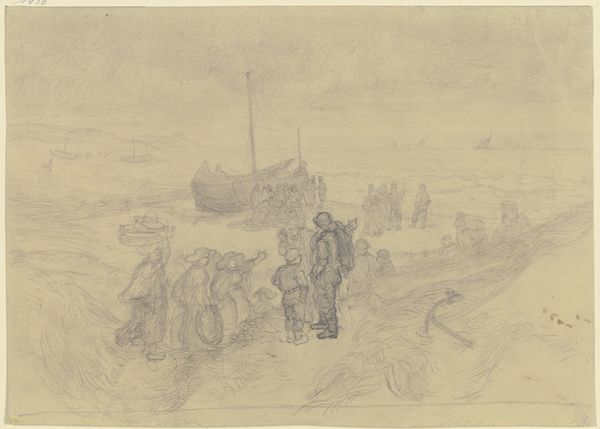
Dimensions: 280 × 444 mm (image); 315 × 463 mm (plate); 373 × 522 mm (sheet)
Copyright: Public Domain
Curator: This print immediately strikes me with its atmosphere; there's a tangible sense of bustle and activity rendered in monochrome. Editor: You’ve nailed it. The artwork before us is Auguste-Louis Lepère’s “The Large Apple Market,” created in 1891 using etching and ink on paper. The scene, housed here at the Art Institute of Chicago, captures a moment of vibrant commerce. Curator: The boats and figures practically overlap. Tell me more—is there any precedent for crowding so many activities together, as a symbolic representation of a vital economy? Editor: Indeed, this reflects Lepère's engagement with the urban experience. Think of the rise of industrial capitalism, and the need for consumerism to fuel this development. Lepère seems determined to record these fleeting, yet foundational aspects of a changing world. The overall effect, I think, challenges prevailing notions of beauty at the time. Curator: It's as if he’s trying to capture the spirit of an era—a snapshot of societal shifts preserved in ink. Look at the cathedral towering over the landscape; this religious icon contrasts greatly with these scenes of workers and market bustle. Is that intentional, I wonder? Editor: Absolutely, it signals a deliberate commentary on the relationship between old structures and emerging forces. We've moved well beyond the Medieval social contract in 1891. Curator: I notice also the diagonal lines slashing across the background. At first glance, they could almost be mistaken as rain, but, I suspect, they might reflect shafts of light, or even represent something symbolic beyond the surface of daily existence. What does it suggest to you? Editor: They visually connect, yet simultaneously separate the background elements: the sky and imposing architectural profiles are literally being ripped open to foreground more earthly concerns. It signals a world being rapidly and radically altered, which I think, mirrors Impressionist sensibilities of impermanence and changing values. Curator: A powerful metaphor for transition. It has that unsettling feel. Editor: The image’s real power lies in showing how such monumental societal transitions trickle down into the day-to-day existence of average citizens, and in reminding us to contemplate how cultural memory and historical context intertwine to imbue ordinary spaces with meaning.
Comments
No comments
Be the first to comment and join the conversation on the ultimate creative platform.
